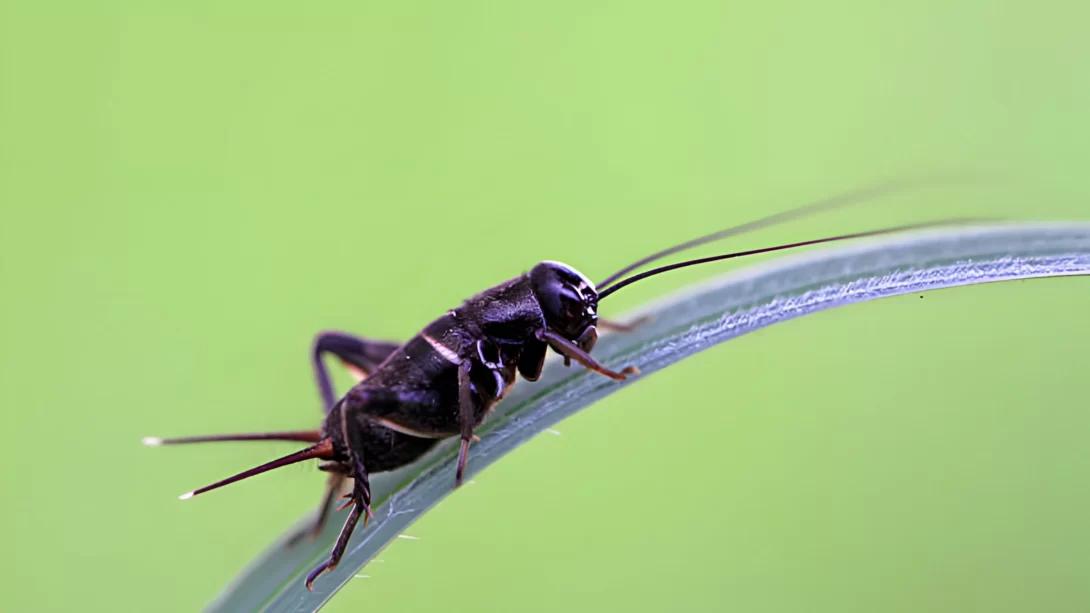Black crickets, commonly encountered in various environments, often spark curiosity and concern among people. A frequent question that arises is whether these ubiquitous insects are harmful. This article aims to explore the nature of black crickets, focusing on their potential impact on humans, households, and gardens, and will provide insight into cohabiting safely with these creatures.
Black Crickets
Black crickets, belonging to the Gryllidae family, are characterized by their dark exoskeleton, long antennae, and the chirping sounds produced by males. They are typically found in outdoor environments such as gardens and fields but can also venture into homes. These insects are nocturnal, predominantly active at night, and are known for their scavenging habits. Understanding their behavior and habitat preferences is crucial in assessing their potential impact on our surroundings.
Potential Harm to Humans
The concern about black crickets often revolves around their potential to bite humans. While they do have the capability to bite, it is relatively rare and usually occurs only when they are provoked or handled. Cricket bites are generally not harmful but can cause minor discomfort or skin irritation. In terms of health risks, black crickets are not known to carry diseases harmful to humans. However, some individuals might experience allergic reactions to crickets, which could include symptoms like skin rashes or respiratory issues.
Impact on Households and Gardens
Black crickets can become a nuisance in households and gardens, especially in large numbers. In homes, they are known for their incessant chirping, which can be a disturbance, particularly at night. They may also cause damage to various materials, including fabrics, plants, and wallpapers, due to their chewing habits. While not typically destructive, their presence can be unsettling and may lead to minor property damage if an infestation is not managed.
In gardens, black crickets generally play a beneficial role as they help in the decomposition of organic matter. However, they can occasionally damage young plants, seedlings, and fruits due to their feeding. This behavior usually occurs when their natural food sources are scarce. Understanding and managing their population can help minimize any potential damage to garden plants.
Black Crickets and Pets
Regarding household pets, black crickets pose little to no risk. In fact, they are often used as a food source for certain pets, particularly reptiles and amphibians. They provide essential nutrients and are a natural prey item in many pet diets. However, pet owners should be cautious about wild crickets, as they might carry pesticides or parasites that could be harmful if ingested. It’s generally safer to use commercially bred crickets for pet feeding purposes.
On the other hand, pets, especially cats, may be inclined to chase or play with crickets in the home. This is usually harmless, but it’s important to ensure that pets do not eat too many crickets, as this could lead to digestive issues. Additionally, the noise made by crickets can sometimes excite or disturb pets, particularly at night.
Control and Prevention
Managing and preventing black cricket infestations is key to minimizing their potential nuisance in homes and gardens. Here are some effective strategies:
- Seal Entry Points: Crickets can enter homes through small cracks and crevices. Sealing these entry points can significantly reduce their indoor presence.
- Reduce Moisture: Crickets are attracted to moist environments. Fixing leaky pipes and ensuring proper drainage can make your home less inviting to them.
- Keep Areas Clean: Regular cleaning helps to eliminate food sources that attract crickets. This includes vacuuming floors and keeping the kitchen free of crumbs and spills.
- Use Natural Repellents: Certain natural substances, like neem oil or diatomaceous earth, can deter crickets without harming the environment.
- Chemical Treatments: In cases of severe infestation, chemical cricket baits or insecticides can be used. It’s important to follow safety instructions and consider the impact on other wildlife and pets.
- Maintain Gardens: Regular garden maintenance, including weeding and removing plant debris, can reduce cricket populations by limiting their habitat.
Conclusion
While black crickets can be a nuisance in homes and gardens and may cause minor damage, they are generally not harmful to humans or pets. Most of the issues associated with crickets can be managed through preventive measures and proper home maintenance. Understanding their role in the ecosystem, especially in gardens, can also help in appreciating these common insects. By implementing effective control and prevention strategies, it is possible to coexist with black crickets without significant inconvenience.




